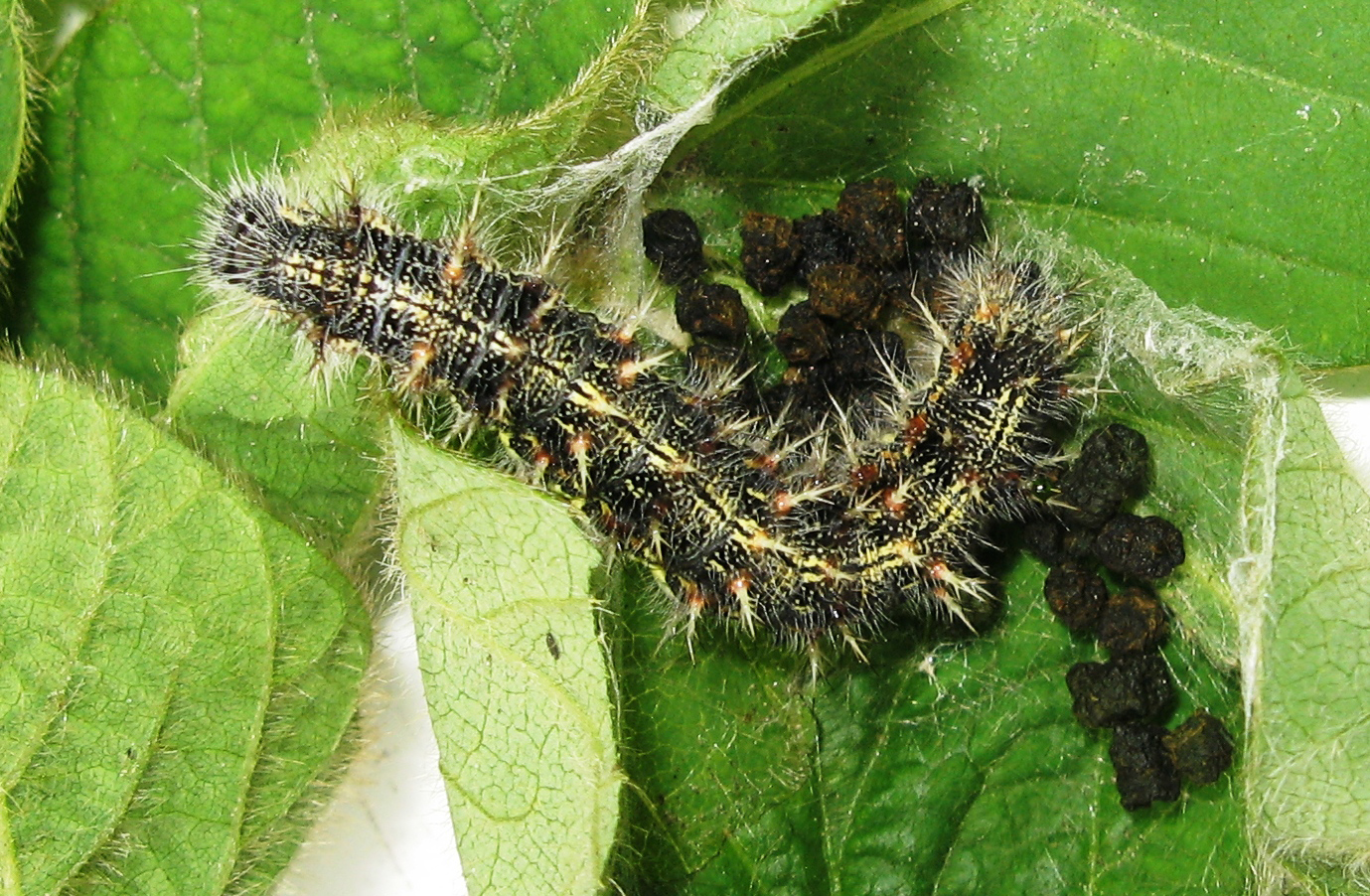Thistle Caterpillar Bites into Bottom Line

By Geoff Geddes
If you’re not losing sleep over thistle caterpillar, it has yet to eat away at your profits. While its common name – the painted lady butterfly – may sound pleasant enough, it could paint your bottom line red if left unchecked.
“The colour of the thistle caterpillar can vary from dark purple to black, with some yellow striping on the side and spikes at each segment of the abdomen,” says Brian Elliot, Manitoba Sales Manager for NorthStar Genetics.
This migrant insect flies in from California, or Mexico, and is not believed to overwinter on the Prairies. While its main hosts are thistles, it can also lay eggs in sunflowers and soybeans.
Fortunately, there are many years where the thistle caterpillar fails to show or appears in limited numbers, but it can make its presence known when the time is right.
“Last year, we saw a higher pressure of this pest all the way up to Swan River in Manitoba,” says Elliot.
Thistle caterpillars usually arrive in June and start laying eggs. From late July to early August, the pressure can build, and they begin feeding on the host’s leaves before entering the pupation stage and emerging as a butterfly. By September, they have died off, though, at that point, the damage has been done.
“They make a little nest in the leaves, curl them up and tie them together, almost like a spider’s web,” says Elliot. “In July, you’ll often see their feces showing up in the nests.”
While they don’t normally do much to soybean pods, they are a defoliator that can interfere with the plant’s normal development.
“These insects can take away some of the photosynthetic material, which may inhibit leaf growth,” says Dr. John Gavloski, an Entomologist with Manitoba Agriculture and Resource Development.
The decision of whether to spray for thistle caterpillar is a tricky one. Although there are no specific economic thresholds for thistle caterpillar, soybeans do have suggested thresholds based on the impact of defoliation, ranging from 25 – 30 percent defoliation prior to bloom and estimated at 20 percent following bloom or pod set.
Because these pests attack in patches, however, creating “hot spots” in a given field, it is unclear if they meet the criteria for spraying.
At the moment, growers need not stew on the “to spray or not to spray” dilemma, as Manitoba and Saskatchewan face less of an issue with this pest than they experienced last year.
“They are here in large enough numbers that people are noticing them, and I have fielded a few calls, but nobody is spraying for them that I have heard,” says Dr. Gavloski. “Last year there was some spraying, especially in soybeans. When you combine their lower population levels this year with better soil moisture and growing conditions in many areas of Manitoba, thistle caterpillars don’t pose a major threat for growers.”
That’s good news for soybean farmers, as there is no insecticide registered in Canada for thistle caterpillars.
“We know some insecticides will work on them, but they are not registered, as thistle caterpillars aren’t a big enough problem to justify the time needed for registration,” says Dr. Gavloski.
If growers are experiencing considerable damage from the pest, they are advised to use an insecticide registered for their crop that is known to be effective against caterpillars.
Though few would use the term “interesting” to describe thistle caterpillars, Dr. Gavloski feels it is an apt description.
“Some people see them as a good, thistle-eating form of biocontrol [a method of controlling pests such as insects, mites, weeds, and plant diseases using other organisms]; others view them as a potential soybean-eating pest, so they are kind of a ‘Jekyll and Hyde’ phenomenon.”
Photo courtesy of Dr. John Gavloski



